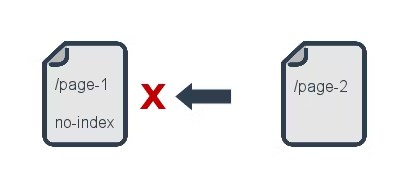|
Importance: High
Error «Non-Compliant Canonical URL» Description
Indicates pages with a link to non-compliant URL in the <link rel="canonical" /> tag or HTTP response header 'Link: rel="canonical"'.

The Importance of the Problem
When a page is available via several addresses or a site has multiple pages with similar content, search engines recommend to specify which URL is the main and has to be shown in search using the <link rel="canonical" /> tag or the 'Link: rel="canonical"' HTTP header. Thereby search robots will not waste their resources on crawling duplicate or unimportant pages.
If a canonical URL points to a non-compliant page, search engines will ignore it. As a result, unimportant pages might get higher rankings in search. It may lead to low rankings of important pages, traffic loss, and even removal of these pages from search results.
Note that canonical is a hint for search engines, not a strong directive. Also, it should be used only for pages with very similar content. Otherwise, it may be ignored.
How to Fix Error
Replace non-compliant canonical URLs with addresses of the compliant pages.
|